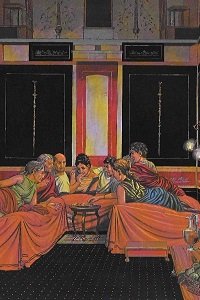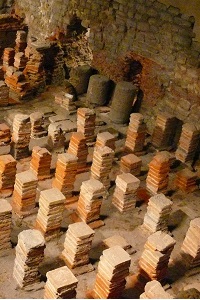Ancient Roman Homes : The Contrast Between Luxurious Domus and Crowded Insulae
Updated on: 11 November 2024Reading time: 3 minutes
For most, ancient Roman homes evoke images of the beautiful villas seen in Roman peplum films, complete with a courtyard or atrium and elegantly decorated rooms. These villas, called domus, were affordable only to the very wealthy.
Most Roman citizens, however, lived in small apartments known as insulae. These residences were often cramped and odorous, housing many occupants. To imagine Rome 2,000 years ago, picture a city with impressive marble structures like the Colosseum and the grand temples in the Forum. Yet, Rome was not a pristine marble metropolis; alongside these monumental buildings were the smelly, overcrowded insulae. In this way, ancient Rome resembled a bustling, densely populated city like Kolkata rather than a clean, polished one like Paris.
The Insula
The city of Rome was a lively hub. Insulae hosted shops facing the streets—bakeries, taverns, workshops, and more. The streets bustled with traffic, including horse- or donkey-drawn carriages, as well as people from all walks of life. Workers and shop owners typically lived above or behind their shops.

|
Insulae could be as tall as six or seven stories—impressive for the time. Made of wood and brick, these buildings were sometimes poorly constructed, leading to risks of collapse or fire. The most expensive apartments were on the lower floors, while the smaller, more crowded upper-floor apartments were cheaper to rent. Lower-floor residents often had access to running water, lavatories, and heating, while upper-floor residents had to rely on the latrinae or public restrooms. Although it was forbidden to throw waste into the streets, this law was frequently ignored, resulting in unpleasant street odours. The insulae were commonly owned by members of the upper class (the equites), who rented them out to the lower and middle classes (the plebs).
The Domus
The Roman upper class enjoyed a lifestyle more like what is seen in ancient Rome movies. Wealthy Romans, whether in the city or countryside, lived in a domus. The domus was a large house centered around an atrium or courtyard. The atrium served as a reception area, featuring an impluvium—a small pool that collected rainwater from the compluvium, an opening in the roof. This setup helped cool the atrium and the entire house.
The atrium functioned as both a reception and living area, akin to a modern living room, where aristocrats received guests and conducted business. The domus also included a kitchen, bathroom, bedrooms (cubuculi), and a triclinium—a dining room where people reclined on couches to eat.

Impluvium in the House of the Silver Wedding in Pompei |
The wealthiest Romans had incredibly luxurious homes with marble floors, multiple dining rooms, a private library, and even a private bath complete with a sauna and pool. These homes were meticulously clean and staffed by servants. Many wealthy Romans also owned similar countryside estates in addition to their city domus.
Notably, insulae and domus were often located within the same neighbourhoods. Unlike today, where affluent areas are generally separate, ancient Roman neighbourhoods included a mix of both rich and poor residences. Some of the wealthiest Romans kept countryside villas as escapes from the city's grime. By the end of the 3rd century A.D., Rome had around 1,800 domus and approximately 45,000 insulae, housing a population of roughly 1,000,000.
SOURCES
- The Houses of Roman Italy, 100 B.C.–A.D. 250: Ritual, Space, and Decoration (John R. Clarke, University of California Press , 1991)
- Roman Domestic Buildings (Ian M. Barton, Liverpool University Press 1st edition University of Exeter Press - Exeter Studies in History, 1996)
- Houses, Villas, and Palaces in the Roman World (Alexander G. McKay, Johns Hopkins University Press First Edition, 1998)
- City: A Story of Roman Planning and Construction (David Macaulay, HMH Books for Young Readers, 1983)

